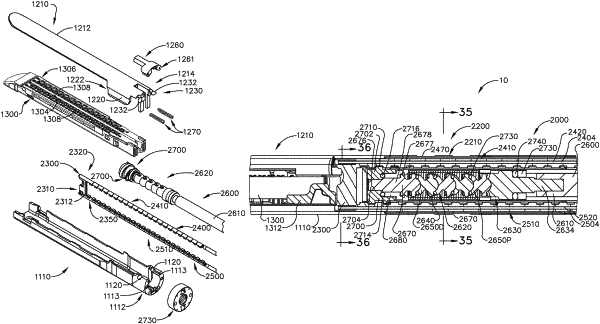| CPC A61B 17/0686 (2013.01) [A61B 17/00234 (2013.01); A61B 17/068 (2013.01); A61B 17/072 (2013.01); A61B 17/07207 (2013.01); A61B 17/29 (2013.01); A61B 17/320092 (2013.01); A61B 34/30 (2016.02); A61B 2017/00314 (2013.01); A61B 2017/00323 (2013.01); A61B 2017/00336 (2013.01); A61B 2017/00367 (2013.01); A61B 2017/00389 (2013.01); A61B 2017/00398 (2013.01); A61B 2017/00477 (2013.01); A61B 2017/07214 (2013.01); A61B 2017/07257 (2013.01); A61B 2017/07271 (2013.01); A61B 2017/07278 (2013.01); A61B 2017/07285 (2013.01); A61B 2017/2927 (2013.01); A61B 2017/320071 (2017.08); A61B 2017/320093 (2017.08); A61B 2017/320094 (2017.08); A61B 2017/320095 (2017.08); A61B 2017/320097 (2017.08); A61B 2034/301 (2016.02)] | 20 Claims |

|
1. A method of operating a surgical instrument comprising a surgical end effector that is articulatable relative to a shaft assembly of the surgical instrument about an articulation joint, wherein said method comprises:
providing a rotary drive motion to a rotary drive member of the surgical end effector, wherein the rotary drive member extends through the articulation joint;
converting the rotary drive motion to an upper axial motion and a lower axial motion at locations that are distal to the articulation joint;
applying the upper axial motion to an upper portion of a firing member; and
applying the lower axial motion to a lower portion of the firing member such that the upper axial motion and lower axial motion drives the firing member distally through the surgical end effector from a starting position to an ending position.
|